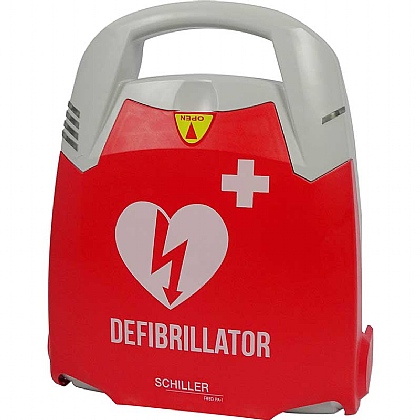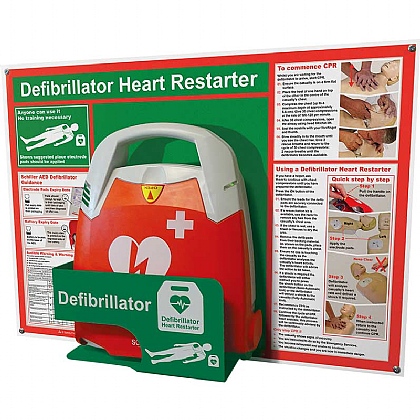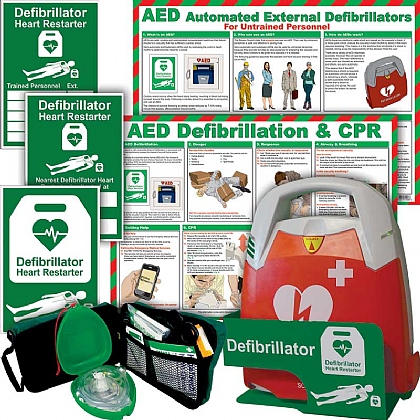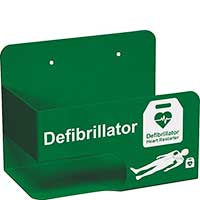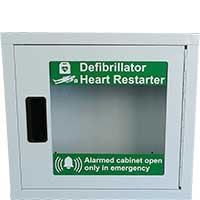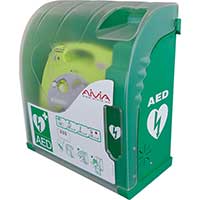
Why are AEDs important?
The Resuscitation Council (UK) reported that 1 person in every 1,000 suffers from a cardiac arrest each year, equating to approximately 60,000 cardiac arrests annually.
Survival rates for out of hospital cardiac arrests are dependent on several factors:
- the presence of bystanders
- time to arrival of the emergency services
- prompt CPR and early defibrillation
Prompt defibrillation is the most critical element in determining the chances of survival.
Automated External Defibrillators (AEDs) are now found in more and more places, from train stations to town halls and schools. An AED is a device which can issue a potentially lifesaving shock to a casualty who is in cardiac arrest – a malfunction in the electrical activity of the heart which rapidly leads to death. Although not all cardiac arrests are ‘shockable’, for those that are, quick use of an AED can greatly increase the casualty's chances of survival.
Having a defibrillator on-site means that life-saving treatment can be given to a casualty immediately, therefore dramatically increasing the chances of survival from a cardiac arrest by up to 75%. Despite being a medical device, AEDs are designed for use by non-medical professionals and therefore are an ideal piece of equipment for workplaces, schools, universities, sports facilities and public spaces.
What is an AED?
AEDs, also known as Publically Accessible Defibrillators (PADs), are portable, battery-powered machines which are designed for use by untrained bystanders to defibrillate cardiac arrest victims before emergency services arrive. This is important as a victims' chances of survival deteriorate over time, even with good-quality CPR. While emergency services aim to reach the most serious casualties within 8 minutes, by this time a victim who has not received CPR has a very low chance of surviving, or surviving without significant brain damage. It’s not always possible for emergency services to meet this target either. The earlier a victim can be defibrillated, the better.An AED can restore normal heart function before emergency services arrive, which gives casualties the best possible chance of survival.
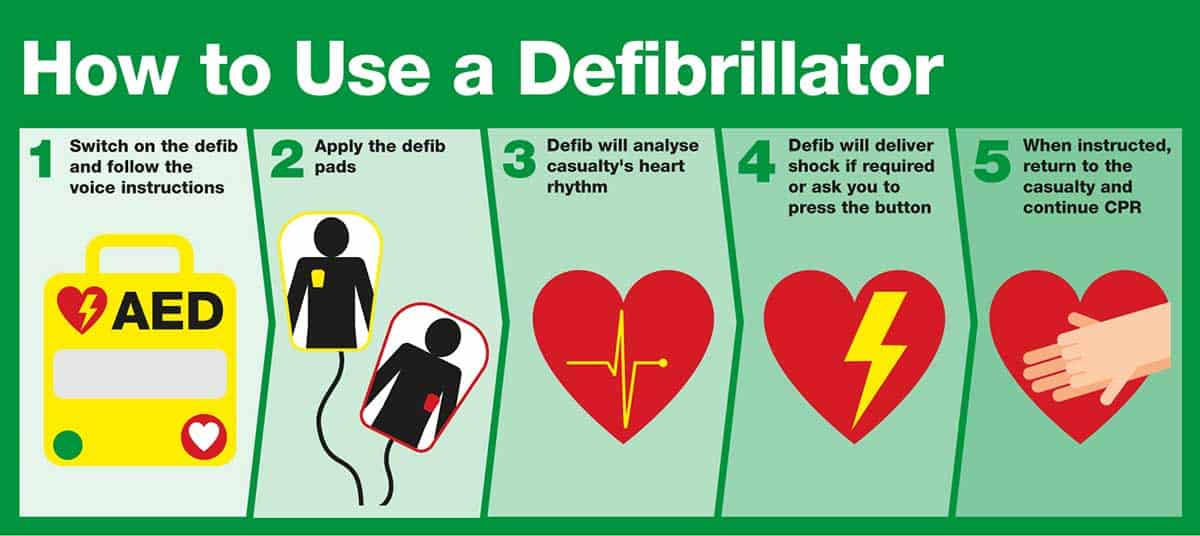
Should my workplace have an AED?
There is currently no UK legislation that obliges employers to provide AEDs on their premises. However, the use of AED is widely recommended in international resuscitation guidelines and, therefore failing to provide an AED could be considered negligent under common law, if a person on the premises experienced a cardiac arrest.
There are several factors employers should consider when it comes to investing in an AED:
- the number of staff and members of the public on site
- known pre-existing health conditions
- the average age of workers or visitors
- the amount of strenuous physical activity undertaken on the site
- the average response time for local emergency services.
For example, an office with a large number of over 50s is at a higher risk of someone having a cardiac arrest than one with a younger workforce.
A gym is also higher risk, as exercise can precipitate a cardiac arrest even in those that appear fit and healthy.
As survival ultimately depends on timely defibrillation, a workplace in a remote location or one with congested roads should consider if emergency services are likely to be able to respond within 8 minutes.
Below are some of our best-selling AEDs, or you can take a look at our full range here.
How should I take care of my workplace AED?
Lack of awareness and confidence around AEDs cause them to go unused and lives to be lost.
- If you are providing an AED in your workplace, make sure everyone knows about it. Put it in a highly visible and accessible place, ideally with some guidance on how to use it placed around. If your AED is in a public or outdoor setting, you may want to place it in a more secure cabinet.
- Make sure you have spare defibrillator pads so that you always have them available for emergencies, even straight after an event where the AED has been used.
- Stay aware of expiry dates and make sure you leave plenty of time for updating supplies, such as batteries.
- Although training isn't required to use an AED, first aid training courses now include a basic introduction to AEDs. Make sure your first aid trained people are up to date with their training so you are prepared for any emergency. You may also want to consider providing your first aiders with an AED Responder Kit so that they are fully prepared to respond to cardiac arrests.
Where can I find out more about AEDs?
- Read this blog if you would like to understand more about cardiac arrests and AEDs.
- Many people get confused between cardiac arrests and heart attacks - read here to understand more about heart attacks and how to respond in the event of one.
About the author:
Dennis Outram is a senior first aid trainer and a Serving Brother in the Order of St John.


